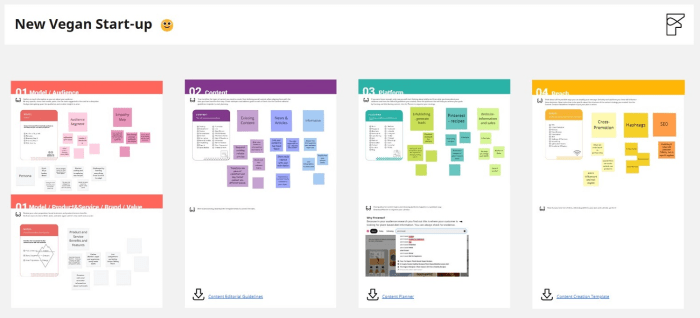5 reasons that walking is the best meditation: This post explores why a simple walk can be a powerful form of meditation, offering a unique blend of physical, mental, and emotional benefits. Discover how incorporating mindful walking into your routine can improve your overall well-being.
From boosting cardiovascular health and reducing stress to enhancing mental clarity and emotional regulation, walking meditation offers a practical and accessible path to inner peace. This isn’t just about putting one foot in front of the other; it’s about connecting with yourself and the world around you in a profound way.
Physical Benefits of Walking Meditation

Walking meditation, beyond its mental benefits, offers a wealth of physical advantages. It’s a gentle yet effective way to improve cardiovascular health, reduce stress, and even enhance sleep quality. By incorporating mindful movement into daily life, individuals can experience a profound positive impact on their overall well-being. The physicality of walking meditation provides a unique avenue for cultivating body awareness, which in turn fosters a deeper connection with the present moment.The rhythmic nature of walking, coupled with focused attention on the body’s sensations, helps to alleviate physical tension and promote relaxation.
This mindful movement allows for a release of physical stress accumulated throughout the day. This physical relaxation translates to a mental state of calm, further reinforcing the interconnectedness of mind and body in the practice.
Cardiovascular Benefits
Walking, even at a moderate pace, significantly contributes to cardiovascular health. Regular practice strengthens the heart muscle, improves blood circulation, and helps maintain healthy blood pressure levels. The consistent movement increases the heart rate, which promotes the efficient pumping of blood throughout the body. This sustained physical activity reduces the risk of developing heart-related diseases. Furthermore, the mindful aspect of walking meditation allows for greater awareness of bodily responses during exercise, promoting a healthier and more informed approach to physical activity.
Stress Reduction Through Movement
Walking meditation serves as a powerful stress reliever. The combination of physical activity and mindful awareness helps to regulate the body’s stress response. The rhythmic movement and focused attention on the present moment can calm the nervous system, reducing the production of stress hormones like cortisol. The deep connection with the body during walking meditation can also promote a sense of groundedness, further mitigating the effects of stress.
Studies show a correlation between regular walking and reduced stress levels, highlighting the practical benefits of this practice.
Improved Sleep Quality
A significant benefit of walking meditation is its positive impact on sleep quality. The physical exertion involved in walking can help to regulate the body’s natural sleep-wake cycle. Furthermore, the stress-reducing effects of mindful walking can promote relaxation and calm, facilitating a more restful sleep. Regular walking meditation can contribute to a deeper and more restorative sleep experience.
This improved sleep quality further supports overall physical and mental well-being.
Posture and Body Awareness
Mindful walking cultivates a profound sense of body awareness. Maintaining proper posture during the practice encourages a more aligned and balanced physical state. By focusing on the sensations of the body moving through space, individuals gain a deeper understanding of their physical limitations and strengths. This heightened awareness of posture and movement translates to improved body awareness in daily life, promoting a greater sense of physical well-being.
This connection with the body is crucial for a holistic approach to health.
Comparison of Physical Effects
| Exercise | Cardiovascular Benefits | Stress Reduction | Sleep Quality | Body Awareness |
|---|---|---|---|---|
| Brisk Walk (Meditation) | Improved heart function, enhanced circulation, potentially lowered blood pressure. | Regulates stress response, reduces cortisol levels, promotes relaxation. | Regulates sleep-wake cycle, promotes restful sleep, improves sleep quality. | Enhanced body awareness, improved posture, increased body connection. |
| Running | Excellent cardiovascular workout, but higher impact. | Can increase stress hormones initially, but long-term can reduce stress. | Can affect sleep depending on intensity and timing. | Can promote body awareness, but may not be as focused as walking meditation. |
| Yoga | Improved circulation, enhanced flexibility. | Promotes relaxation and reduces stress through postures. | Can improve sleep quality through relaxation and stress reduction. | High focus on body awareness and posture. |
This table highlights the key physical effects of a brisk walk (in the context of walking meditation) compared to other forms of exercise, emphasizing the benefits specifically related to the mindful aspect of the practice. It’s important to note that individual results may vary.
Mental Clarity and Focus During Walking
Walking meditation isn’t just about physical movement; it’s a powerful tool for cultivating mental clarity and focus. The rhythmic nature of walking, combined with mindful awareness, can create a unique state of mental presence, allowing us to quiet the chatter of the mind and enhance our ability to concentrate. This focused attention, in turn, has a ripple effect on our overall well-being, improving our ability to handle stress and navigate daily challenges.The act of walking, especially when practiced mindfully, encourages a shift in our perspective.
We move away from the static nature of traditional meditation, engaging our senses in a dynamic way. This active engagement can be remarkably effective in reducing mental clutter and promoting a sense of calm focus.
The Link Between Walking and Improved Mental Clarity
Walking meditation fosters mental clarity by engaging different parts of the brain. The physical activity increases blood flow, delivering oxygen and nutrients to the brain. Simultaneously, the focused attention on the present moment, a core principle of mindfulness, reduces mental distractions and promotes a sense of calm concentration. Studies have shown that regular walking meditation can improve cognitive function, including attention span and memory recall.
Techniques for Maintaining Focus During Walking Meditation
Maintaining focus during a walking meditation requires conscious effort and practice. Mindful breathing is paramount. Pay close attention to the sensation of each breath—the inhale and exhale. This anchors you in the present moment, preventing your mind from wandering. Furthermore, cultivate awareness of your surroundings.
Notice the textures of the ground beneath your feet, the sounds around you, and the sights before you. Each sensory experience can be a stepping stone to deepen your engagement with the present.
Mindful Breathing and Awareness of Surroundings
Mindful breathing is a crucial component of walking meditation. By focusing on the rhythm of your breath, you anchor your attention in the present moment, creating a space for mental clarity. The act of observing your breath without judgment allows you to acknowledge and release distracting thoughts. Similarly, cultivate awareness of your surroundings, such as the feel of the pavement, the chirping of birds, or the rustling of leaves.
This sensory engagement grounds you in the here and now, fostering a sense of presence.
Comparison of Walking Meditation to Other Mental Exercises
Walking meditation offers a unique approach to stress reduction compared to other mental exercises. While practices like yoga or Tai Chi also cultivate mindfulness, walking meditation combines physical activity with mental focus in a dynamic way. This active engagement can be particularly beneficial for individuals who find traditional seated meditation challenging or prefer a more active form of mindfulness.
The physical movement can release endorphins, which have a positive impact on mood and stress levels.
Ever wondered why walking can be such a powerful form of meditation? It’s all about consistent practice, and like any skill, you need a strategy to really master it. Just showing up and walking won’t automatically unlock enlightenment. Just like repeated practice without strategy won’t help you learn faster, no matter how hard you work , a mindful walk requires intention.
So, while there are many reasons walking is a fantastic meditation, a deliberate approach, focusing on your breath and surroundings, is key. This is what truly unlocks the meditative power of a simple stroll.
Elements Contributing to Mental Calmness
The sensory experience plays a significant role in cultivating mental calmness during walking meditation. The sensation of the ground beneath your feet, the rhythm of your steps, the feeling of the air on your skin, and the sounds and sights around you create a rich tapestry of sensory input. These sensory experiences anchor you in the present moment, allowing you to observe the world around you without judgment.
Ever wondered why walking is such a fantastic meditation? It’s not just about the physical benefits; it’s also about how you approach your day. Think about how the most productive people see the world—for example, 7 things the most productive people see differently —and how that relates to finding quiet moments in a busy life. The ability to focus and clear your mind, key to those productive habits, are mirrored in the five reasons walking is such a powerful meditation.
It’s all about being present, observing, and letting go.
This creates a space for mental clarity and emotional regulation, fostering a sense of inner peace.
Emotional Regulation Through Walking
Walking meditation isn’t just about physical movement; it’s a powerful tool for emotional well-being. By engaging in mindful walking, we can develop a deeper understanding of our emotional landscape and cultivate healthier responses to stress, anxiety, and other challenging feelings. This process allows us to build emotional resilience and navigate life’s inevitable emotional ups and downs with greater ease.Emotional regulation through walking is a process of becoming more attuned to our inner experience while simultaneously engaging in a physical activity.
It’s about noticing emotions as they arise, without judgment, and using the physical act of walking to help us process and manage them effectively. This mindful approach to movement fosters emotional awareness and promotes healthier emotional responses.
Recognizing and Processing Emotions During Walking
Mindful walking facilitates the recognition of emotional shifts. As you walk, pay attention to physical sensations in your body. Tension in your shoulders, a racing heart, or a tightening in your chest might signal rising anxiety. Similarly, a feeling of lightness, a sense of expansiveness, or a surge of energy might indicate happiness or excitement. By acknowledging these physical cues, you can begin to identify the corresponding emotions.
Processing emotions during walking involves accepting them without judgment. Allow yourself to feel the emotion fully, without trying to suppress or change it. Imagine the emotion as a cloud passing through the sky – acknowledge its presence, but don’t get caught up in it. Simply observe its impact on your body and mind.
Sensory Awareness in Emotional Regulation
Sensory awareness plays a crucial role in emotional regulation during walking meditation. Engage your senses fully. Notice the feel of the ground beneath your feet, the temperature of the air, the sounds around you, and the sights you encounter. This heightened sensory awareness helps anchor you in the present moment, reducing the tendency to ruminate on past experiences or anxieties about the future.
As you become more grounded in the present, the intensity of emotions tends to lessen.
Managing Different Emotional States
| Emotional State | Strategies for Managing Through Walking |
|---|---|
| Stress | Slow down your pace, increase your awareness of your breath, and focus on the rhythm of your steps. Deep breaths and intentional stretching during the walk can help alleviate tension. |
| Anxiety | Take shorter steps, focus on the sensations in your feet, and bring your awareness to your breath. Visualize a calming image or mantra while walking. |
| Anger | Increase your pace and engage in brisk walking. Focus on the physical sensation of your muscles working. This can help channel anger into physical energy. As you walk, notice the sensations of your body and observe your anger without judgment. |
| Sadness | Maintain a steady pace, and focus on the sights and sounds around you. Allow yourself to feel the sadness without judgment. As you walk, pay attention to the sensations in your body and breathe deeply. |
| Happiness | Maintain a faster pace, engage in rhythmic steps, and increase the awareness of your surroundings. Engage in light stretching while walking. |
Mindfulness and Presence in Walking
Walking meditation isn’t just about putting one foot in front of the other; it’s about cultivating a deeper connection with the present moment. This mindful approach to movement allows us to observe our thoughts and feelings without judgment, fostering a sense of inner peace and clarity that extends beyond the practice itself. It’s a powerful tool for stress reduction and emotional well-being.Through the practice of walking meditation, we learn to engage with our surroundings in a more conscious and appreciative way.
This awareness extends to our physical sensations, emotional responses, and mental chatter, enabling us to navigate daily life with greater presence and equanimity.
Core Principles of Mindfulness in Walking
Mindfulness in walking meditation centers on the principle of non-judgmental observation. We acknowledge our thoughts and feelings as they arise without getting carried away by them. This detached awareness allows us to recognize patterns in our thinking and emotional responses, leading to greater self-understanding and emotional regulation. This non-judgmental approach fosters acceptance and compassion towards ourselves.
Observing Thoughts and Feelings Without Judgment
A key aspect of walking meditation is the practice of observing thoughts and feelings as they arise and pass. Imagine your thoughts as clouds drifting across the sky. You acknowledge their presence, note their characteristics (shape, size, color), and allow them to move on without getting caught up in their content. The same applies to emotions. Recognize the sensation without labeling it as good or bad, right or wrong.
Ever wondered why walking is such a fantastic meditation? Five reasons abound! It’s a chance to connect with nature, clear your head, and build mindfulness. Finding ways to stay centered during challenging times like the pandemic, and practicing personal responsibility like taking a walk, are vital for our well-being. Surviving and thriving amid the pandemic personal responsibility requires consistent self-care, and walking fits the bill perfectly.
It’s a simple, accessible way to de-stress and reconnect with yourself, making it an ideal tool for meditation. So, put on your shoes and step out for a walk – you might just discover five reasons why it’s the best meditation.
This practice cultivates emotional resilience.
Integrating Sensory Awareness into Walking Meditation
Sensory awareness is fundamental to mindful walking. Notice the sensation of your feet hitting the ground, the feeling of the air on your skin, the sounds around you. Pay attention to the subtle nuances of each step, the rhythm of your breathing, and the interplay between your body and the environment. By engaging all your senses, you anchor yourself in the present moment.
This enhanced sensory awareness sharpens your perception of your surroundings. A simple example is noticing the different textures of the pavement underfoot.
Structured Method for Sensory Awareness, 5 reasons that walking is the best meditation
- Begin with a comfortable walking pace.
- Pay attention to the sensations in your feet as you place each foot on the ground.
- Notice the movement of your legs and the shifting of your weight.
- Observe the feeling of the air on your skin.
- Listen to the sounds around you.
- Feel the rise and fall of your breath.
- Notice any thoughts or emotions that arise, observing them without judgment.
- Return your attention to your senses if your mind wanders.
This structured approach can be adapted to suit individual preferences.
Potential Distractions and Strategies
- Distractions: Thoughts about the past or future, worries, anxieties, physical discomfort, conversations with others, or external stimuli such as traffic or music. Even the anticipation of a goal or the anticipation of something that could happen in the future can cause distractions.
- Strategies: Acknowledge the distraction without getting carried away. Gently redirect your attention back to the sensations of walking. Remind yourself that thoughts are temporary and will pass. Visualize a mantra or focus on your breath to anchor yourself. If possible, choose a less distracting location to practice.
Practical Applications and Variations of Walking Meditation
Walking meditation isn’t just about strolling mindlessly; it’s a dynamic practice that can be adapted to various settings and lifestyles. This adaptability makes it accessible to people of all backgrounds and physical capabilities. It’s not just a technique for achieving inner peace; it’s a tool for cultivating presence and mindfulness in everyday life.This section will explore different types of walking meditations, highlighting how to incorporate them into your daily routine and tailor them to your unique needs.
We’ll also look at adapting the practice for various physical abilities and circumstances, ensuring that walking meditation remains a valuable tool for everyone.
Mindful Walking in Nature
Engaging with nature enhances the mindful walking experience. The sights, sounds, and sensations of the natural world provide rich sensory input, grounding you in the present moment. Focusing on the feeling of your feet on the ground, the rustling leaves, the chirping birds, or the gentle breeze allows you to deepen your connection with the environment and your inner self.
Observe the details without judgment, allowing the beauty of nature to nourish your awareness.
Mindful Walking in Urban Settings
Urban environments offer a different set of opportunities for mindful walking. You can focus on the rhythm of the city, the patterns of pedestrian traffic, the diverse soundscape, or the unique architectural details. Instead of being overwhelmed by the bustle, you can use the sensory richness of the city to deepen your awareness. Pay attention to the texture of the pavement underfoot, the smell of exhaust fumes or street food, and the way the light falls on buildings.
You can practice noticing and acknowledging the activity without getting caught up in it.
Incorporating Walking Meditation into Daily Routines
Integrating walking meditation into your daily routine can significantly enhance your overall well-being. It can be as simple as taking a mindful walk during your lunch break or incorporating a short meditation walk before your workday begins. The key is to find a time that works for you and make it a consistent part of your schedule.
A Step-by-Step Guide for Beginners
- Choose a suitable location: Select a place where you can walk comfortably and safely, without distractions. This could be a park, a quiet street, or even your own living room.
- Find a comfortable pace: Don’t rush. Maintain a pace that allows you to focus on your body and breath without strain.
- Focus on your breath: As you walk, bring your attention to your breath. Notice the sensation of the air entering and leaving your body.
- Engage your senses: Observe the sights, sounds, smells, and textures around you. Notice the feel of the ground beneath your feet.
- Acknowledge distractions: When your mind wanders, gently redirect your attention back to your breath and your surroundings.
- Start with short sessions: Begin with 5-10 minutes and gradually increase the duration as you become more comfortable.
Adapting Walking Meditation for Various Physical Abilities and Circumstances
Walking meditation can be adapted to suit individuals with various physical abilities and circumstances. For example, those with mobility limitations can practice mindful walking in place, focusing on the movement of their body parts and the sensation of their breath. People with injuries can modify their pace and steps to avoid exacerbating pain. It’s essential to listen to your body and modify the practice as needed.
The goal is to find a way to incorporate mindful movement into your life, not to push yourself beyond your limits.
Comparison to Other Meditation Practices
Walking meditation, while sharing the core principles of mindfulness with other forms of meditation, offers a unique and often overlooked approach. Its integration of physical movement with mental focus provides a distinct set of benefits and challenges compared to more traditional seated practices. Understanding these differences allows practitioners to tailor their meditation approach to their specific needs and preferences.This exploration delves into the comparative landscape of walking meditation, examining its strengths and weaknesses in contrast to other forms of meditation.
It highlights the specific mental and physical advantages of incorporating movement into a meditative practice, setting it apart from the more static nature of other approaches.
Walking Meditation vs. Seated Meditation
Walking meditation and seated meditation, both powerful tools for cultivating mindfulness, differ significantly in their approach. Seated meditation often emphasizes stillness and mental quietude, focusing on observing thoughts and emotions without judgment. Walking meditation, on the other hand, integrates physical movement with mental awareness, introducing a dynamic element that can enhance focus and emotional regulation.
| Feature | Walking Meditation | Seated Meditation |
|---|---|---|
| Physical Activity | Incorporates physical movement, promoting physical awareness and grounding. | Requires stillness, focusing primarily on mental awareness. |
| Mental Focus | Requires constant attention to the present moment, integrating body awareness with mental focus. | Emphasizes concentration and mental stability, often through breath awareness. |
| Emotional Regulation | Can provide a more active engagement with emotional states, through movement and observation. | Promotes emotional awareness and acceptance through stillness and mental observation. |
| Accessibility | Potentially more accessible for individuals who find seated meditation challenging due to physical limitations or restlessness. | Generally easier to integrate into daily life when time constraints are a factor. |
| Challenges | May be difficult for beginners to maintain focus and awareness while moving. | Requires discipline to maintain posture and concentration without distractions. |
Distinctive Advantages and Disadvantages
Walking meditation, while offering a dynamic and engaging alternative, presents unique advantages and disadvantages compared to seated meditation. Its integration of movement can be particularly beneficial for individuals with physical limitations or restlessness, offering a more adaptable and engaging approach to mindfulness.
- Advantages: Walking meditation can be more accessible to individuals who find traditional seated meditation challenging. The physical activity can help ground the practitioner and increase alertness, potentially enhancing focus and clarity. Furthermore, the constant movement can provide a welcome break from the stillness of seated meditation, especially for those who struggle with stillness.
- Disadvantages: Maintaining focus and awareness while walking can be challenging, especially for beginners. External distractions such as traffic or other pedestrians can disrupt the meditative state. The physical exertion required may not be suitable for everyone, and the need for a suitable walking environment may be limiting in some situations.
Mental and Physical Benefits
The unique integration of movement and mindfulness in walking meditation yields distinct mental and physical benefits that distinguish it from other practices.
- Mental Benefits: Walking meditation fosters a deeper connection with the body, enhancing body awareness and grounding. The rhythmic motion of walking can aid in calming the mind and reducing stress. The present moment focus required during walking meditation helps to quiet the mental chatter and enhance mental clarity.
- Physical Benefits: The physical activity involved in walking meditation contributes to improved cardiovascular health, increased energy levels, and enhanced flexibility. The rhythmic movement can promote relaxation and reduce muscle tension. These benefits are complementary to the mental benefits, creating a holistic approach to well-being.
Environmental Benefits of Walking Meditation

Walking meditation isn’t just good for your mind and body; it also has a significant positive impact on the environment. By choosing to walk instead of driving, we reduce our carbon footprint and contribute to a healthier planet. This mindful connection with our surroundings fosters a deeper appreciation for nature and encourages sustainable practices.Walking meditation, particularly in natural settings, provides a powerful link between our well-being and the health of the environment.
It’s a simple act that can have profound effects on both our individual and collective environmental responsibility.
Impact on Carbon Footprint
Walking significantly reduces our reliance on vehicles, thereby lowering carbon emissions. Choosing to walk for errands, commutes, or even leisure activities directly contributes to cleaner air and a reduced strain on the planet’s resources. This conscious choice can create a ripple effect, encouraging others to adopt similar sustainable practices.
Walking in Nature for Stress Reduction
Studies have shown that spending time in nature significantly reduces stress levels. The sights, sounds, and smells of natural environments have a calming effect on the mind and body. Walking meditation in parks, forests, or along waterways can be a powerful antidote to the pressures of modern life, fostering a sense of peace and connection with the natural world.
Locations for Walking Meditation
Choosing the right location for your walking meditation can enhance the experience and its benefits. Here are a few suggestions:
- Parks and Gardens: Parks and gardens often provide a serene and peaceful environment, perfect for focusing on your breath and surroundings. Their manicured landscapes, vibrant flowers, and carefully placed features can create a tranquil atmosphere.
- Coastal Areas: The rhythmic sound of waves, the fresh sea air, and the vastness of the ocean can provide a unique and invigorating experience for walking meditation. The beauty and power of the ocean can evoke a sense of awe and wonder.
- Forest Trails: Forest trails offer a more secluded and immersive experience. The towering trees, the dappled sunlight, and the sounds of nature create a sense of grounding and connection with the natural world. The intricate ecosystem and rich biodiversity within a forest can inspire profound respect for the natural world.
- Urban Green Spaces: Even within cities, pockets of green space can offer opportunities for walking meditation. Urban parks, community gardens, or even a quiet street lined with trees can provide a peaceful refuge from the hustle and bustle of city life. These spaces, though smaller, often have their own unique character and beauty.
Nature and the Effectiveness of Walking Meditation
The effectiveness of walking meditation is significantly enhanced when practiced in natural settings. The calming presence of nature helps to quiet the mind, reduce distractions, and deepen the meditative experience. The natural world provides a powerful anchor, fostering a profound sense of connection and mindfulness. This connection, in turn, can reinforce the commitment to sustainable living and environmental stewardship.
Conclusive Thoughts: 5 Reasons That Walking Is The Best Meditation
In conclusion, walking meditation provides a holistic approach to well-being, integrating physical movement with mental focus and emotional awareness. By incorporating these practices into your daily life, you can cultivate a deeper connection with yourself and the world around you, experiencing a sense of peace and clarity. The benefits extend far beyond a simple stroll, offering a powerful tool for stress reduction and self-discovery.









